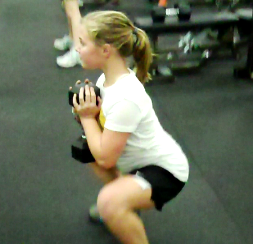Appropriately designed and supervised resistance training programs can benefit youth of all ages, but the focus for children should be based on building muscle strength, function, and control, not on increasing muscle size, says a new international consensus statement. (Loyd RS, et al 2014)
Children as young as 5-6 years of age making noticeable improvements in muscular fitness following exposure to basis resistance training using free weights, elastic resistance bands and machine weights, the statement says.
The statement notes that childhood is a crucial time in which to develop motor skill competency, as it is during these formative years that neuromuscular coordination is most susceptible to change and during which children experience rapid brain maturation. Thus, the statement says it is crucial for long-term athletic development and life-long physical activity to expose children to key athletic movement patterns at the same time as the brain is undergoing these changes.

When to start
Because of the highly individualized nature of growth and maturation, with children and adolescents of the same chronological age varying markedly in biological status (up to 4-5 years), chronological age is considered a weak indicator of a child's readiness for formal resistance training. The statement thus recommends that parents allow their child to engage in resistance training only when they are emotionally mature enough to accept and follow directions, and possesses competent levels of balance and postural control.
The focus of resistance training in children, it says, should be based on goals related to muscle strength, function, and control, as opposed to trying to make substantial increases in muscle size.
"Indeed, when training children and adolescents the adoption of a long-term approach to physical development should be implemented," says the statement, "with a clear understanding of the primary mechanisms responsible for training-induced adaptations during different stages of development."
Traditional fears unfounded
"It is noteworthy that traditional fears and misinformed concerns that resistance training would be harmful to the developing skeleton [and stunt growth or reduce eventual height in adulthood] have been replaced by reports indicating that childhood may be the opportune time to build bone mass and enhance bone structure by participating in weight-bearing physical activities," writes Dr. Gregory Meyer, a sports medicine physician at Cincinnati Children's Hospital, and one of the statement's co-authors.
In fact, writes Dr. Meyer, not only are fears that resistance training would injure the growth plates of youths not supported by scientific reports or clinical observations, studies show that childhood and adolescence are indeed key developmental periods for increasing bone-mineral density, and that failure to participate in moderate-to-vigorous weight-bearing physical activity during these stages of growth may predispose youth to long-term bone-health implciations.
Source: Loyd RS, Faigenbaum AD, Stone MH, et al. Position statement on youth resistance training: the 2014 International Consensus. Br J Sports Med 2014;48:498-505. doi:10.1136/bjsports-2013-092952








